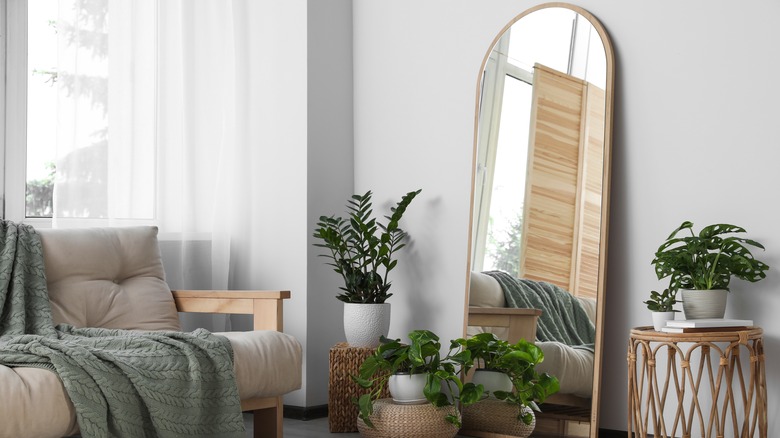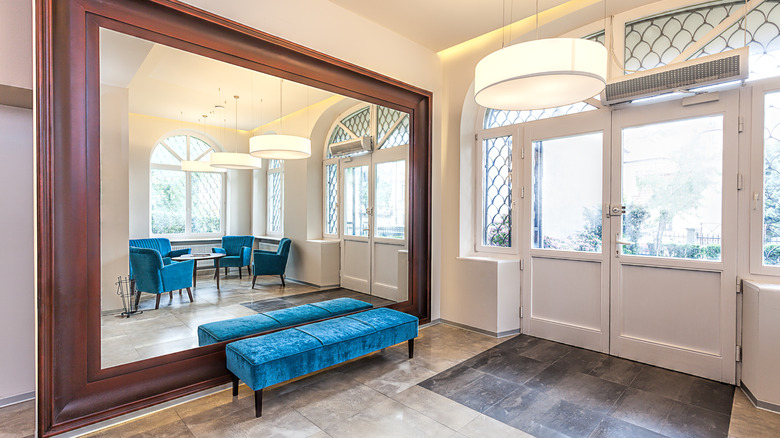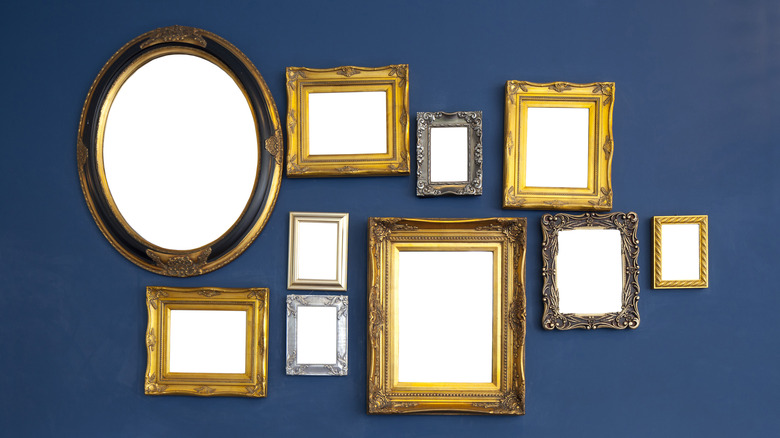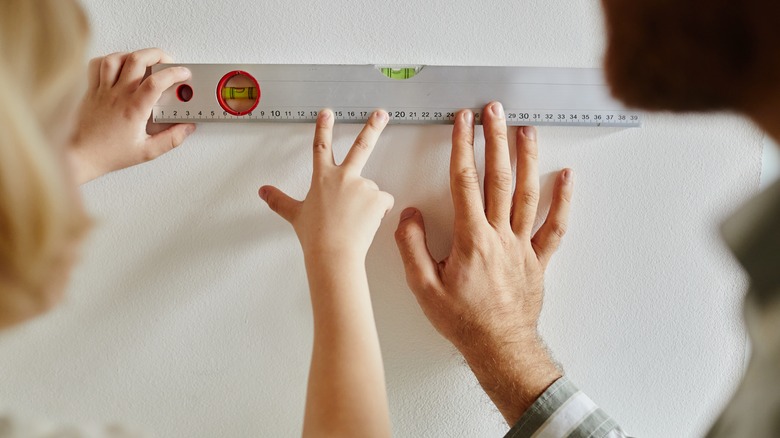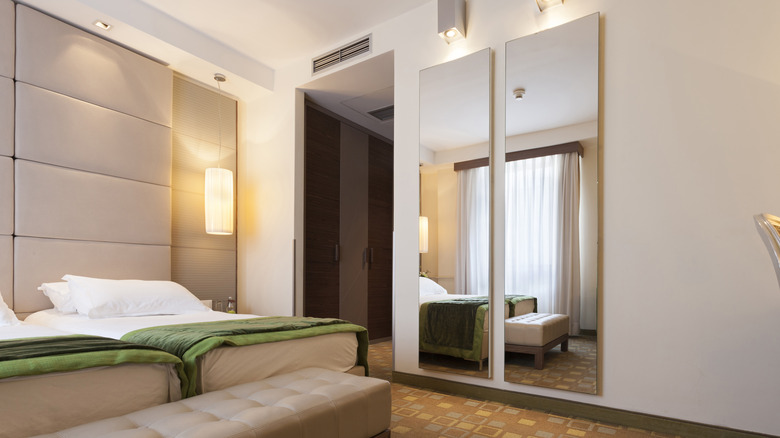How To Use Mirrors To Make Your Small Space Look Bigger, According To An Expert
Sometimes a small space can be uncomfortable, making it hard for you to relax. You might not need more room for your belongings, yet, it's hard to unwind when the walls seem so close. When this happens, there are a few key things you can do to make that space feel bigger, like painting it a light color to give it an airy quality and even removing doors to help open up the flow, suggests Urban Rhythm. Even then, you may need more help to create a welcoming impression.
In this case, mirrors could prove more beneficial than you realize. Properly selected and deliberately placed wherever you're feeling cramped, mirrors can help you achieve the best possible outcome without changing up the layout of your home. If you're wondering where to install a mirror to get the ideal results, we've got you covered. In an exclusive interview with House Digest, we spoke with John Linden, an interior designer with Mirror Coop. As expected, he came back with some excellent suggestions on exactly how to use mirrors to make small spaces feel bigger.
Working with large mirrors
Let's say you've already decluttered. You need everything that remains in your space, and you're still hoping to make it at least appear spacious even if it really isn't. Linden shares that reflective surfaces provide a way to expand a space visually, but the right location makes a big difference. "Mirrors reflect light and make a room seem larger, creating the illusion of more space. You can strategically place a few large mirrors or hang several smaller ones to create the effect," he says.
Think about the placement of mirrors based on where you sit in the room as well as how you move through it. Use mirrors to brighten areas that feel closed in or limiting. "For example, you can hang a mirror on an adjacent wall to reflect the light from a window or place a large mirror opposite a piece of furniture to make the room feel larger," suggests Linden. Whatever you have on your walls now, consider repositioning and aligning them in order to fit a mirror or two.
Achieving the effect with smaller mirrors
Not everyone has a big, open wall space for a big mirror, but you don't have to feel left out of this design tactic, Linden explains. "You can also hang multiple, smaller mirrors in a grid pattern to create a more dynamic look," says the designer. "Start by selecting the mirrors that you want to use. Consider the size, shape, color, and frame of the mirrors and how they will look together when hung." There's a mirror to match any interior design look. From rustic to ultra-modern, look for mirrors that appeal to your tastes.
Linden warns not to over do it, though. "Once you've selected the mirrors, you'll need to measure the walls to determine how much wall space you have and how many mirrors you can fit." Before making a purchase, be sure you're buying what will actually work in the space without further cluttering up the walls, and avoid buying too many mirrors that would end up making the wall too distracting.
Preparing to mount your mirrors
Mirrors are often heavy and hard to balance. Putting them up takes a bit of care, often more than hanging a simple picture frame due to the weight of the glass. Linden recommends creating a plan for how to layout and organize the mirrors. "Once you've determined the space and the number of mirrors, you'll need to mark the wall with a level and a pencil to map out the grid pattern. If you like the symmetrical look, the grid should be evenly spaced and have the same amount of space between each mirror," he says.
Keeping the eye and brain happy takes a bit of careful finessing. "You'll need to measure the space between each mirror to make sure they are the same distance apart. For something more abstract, it's still worth marking the shape and size of each mirror on the wall prior to hanging," adds Linden. To create the illusion of a more spacious room, arrange a layout pattern that's appealing to your eye but also one that is as balanced as possible. If you don't like it, change it up until you do.
Installation tips and best practices
With the layout of your mirrors complete, your next step is actually installing them. Like laying them out, there are best practices to follow and it's worth going the extra mile to get this just right. "Next, you'll need to attach the mirrors to the wall," says Linden. "Use appropriate wall anchors and screws to secure the mirrors safely. Make sure to double check the measurements and the grid pattern before you attach the mirrors."
As you're managing this process, remember that the goal is to make the space attractive and appealing. You'll do that better when you invest in a bit of time during the installation process instead of just hanging the mirrors anywhere you think might work. Linden quips, "Pencil marks are much easier to erase than holes are to patch." Rushing the final project will lead to repairing a dozen holes when it doesn't look the way you want. A bit of forethought and preparation is all it takes to decorate with mirrors successfully.
